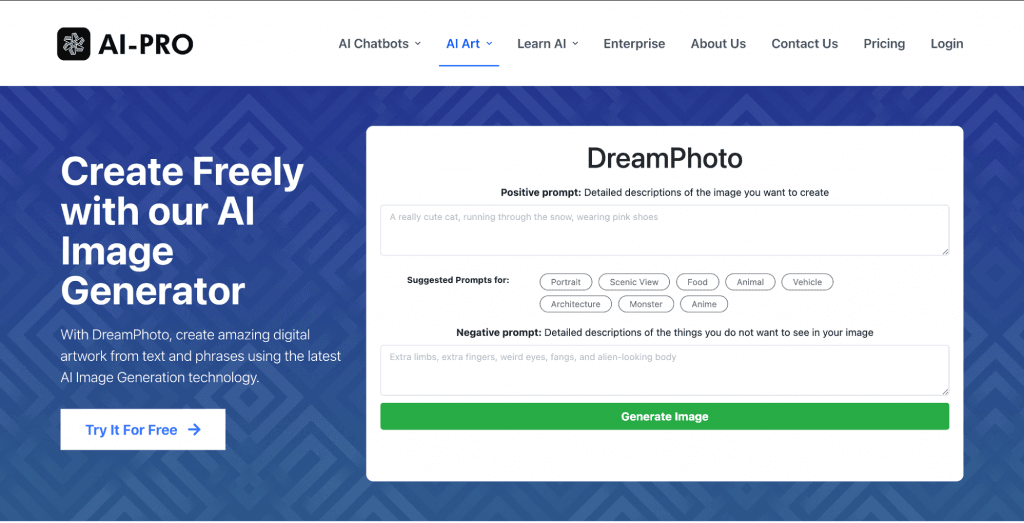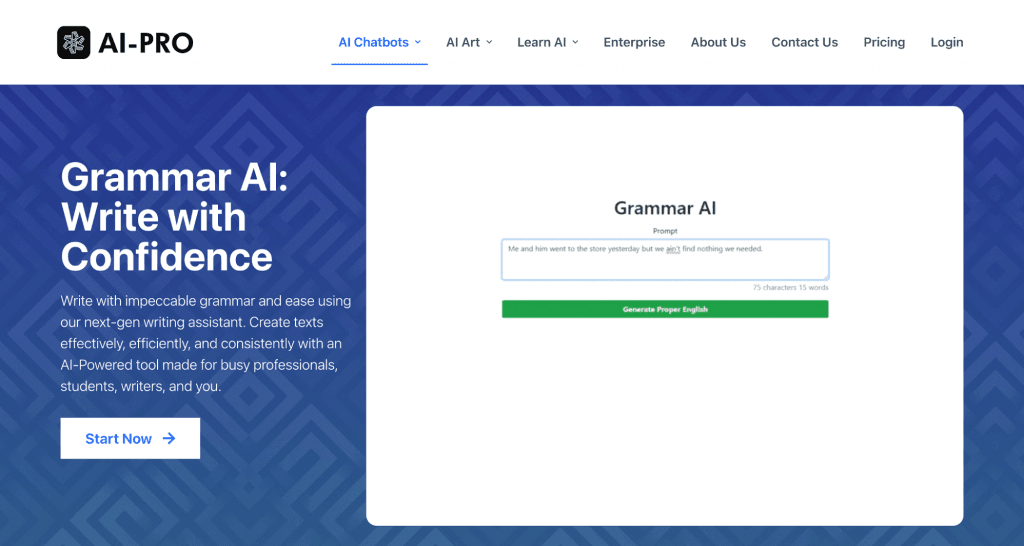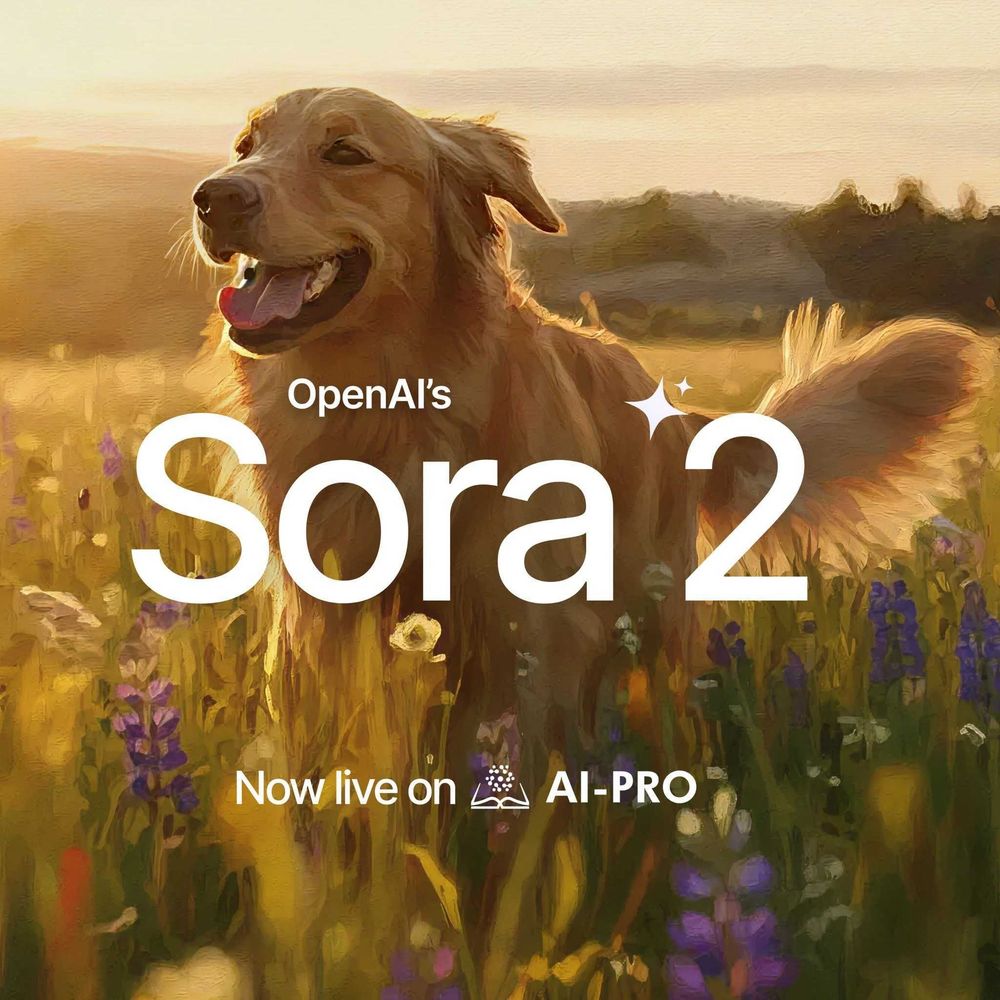Artificial intelligence (AI) tools are revolutionizing the way we work, live, and interact with technology. According to recent studies, the global AI market is expected to reach $190.61 billion by 2025, underscoring the explosive growth and adoption of AI technologies across various industries. From automating mundane tasks to providing deep insights through data analysis, AI tools are becoming indispensable in our daily lives and business operations.

In today's fast-paced world, understanding and leveraging AI tools is no longer optional—it's essential. The integration of AI into our workflows promises not only to enhance efficiency and productivity but also to unlock new opportunities and competitive advantages. However, with great power comes great responsibility, and it's crucial to navigate the landscape of AI tools wisely.
This article aims to be your ultimate guide to the best AI tools available in 2024. We'll explore what AI tools are, why they are a must-have in today's technological era, and delve into the different types of AI tools with some of the best examples in each category. Additionally, we'll discuss important warnings against over-dependence on AI, ensuring you have a balanced understanding of both the potential and the pitfalls of these powerful tools.
We'll demystify complex concepts and provide practical insights to help you harness the power of AI effectively and responsibly.
What Are AI Tools?
AI tools are software applications that utilize artificial intelligence technologies to perform tasks that typically require human intelligence. Unlike traditional software, which follows predefined instructions to execute specific tasks, they are designed to adapt and improve their performance over time by learning from provided data.
The evolution of AI tools spans decades, from early concepts in the 1950s to today's ubiquitous applications. Starting with basic programs like the Logic Theorist, the technology progressed through expert systems in the 1960s-70s and machine learning in the 1980s-90s. The 2000s saw AI integrated with big data, leading to its widespread adoption. The 2010s brought the deep learning revolution, with advancements in areas like image recognition.
Now, in the 2020s, AI tools are everywhere, accessible through user-friendly platforms, reshaping industries and everyday life. They combine various AI tech and techniques that allow them to perform simple to complex tasks. Some of the most widely used technologies are:
1. Machine Learning
Machine learning enables AI tools to learn from data and improve their performance over time without being explicitly programmed. This feature allows them to adapt to new information and provide more accurate results as they process more data.
2. Natural Language Processing (NLP)
NLP enables these tools to understand, interpret, and respond to human language. This feature is critical for applications such as chatbots, virtual assistants, and sentiment analysis tools, enabling more natural and effective human-computer interactions.
3. Automation
AI tools excel at automating repetitive and mundane tasks, freeing up human workers to focus on more complex and creative activities. Automation capabilities are widely used in areas like robotic process automation (RPA), where they handle tasks such as data entry and transaction processing with high efficiency and accuracy.

4. Predictive Analytics
By analyzing historical data and identifying patterns, AI tools can make predictions about future events, a useful capability in various industries, from forecasting sales trends in retail to predicting equipment failures in manufacturing.
5. Computer Vision
Computer vision enables AI tools to interpret and process visual information from the world, much like humans do. It is crucial for applications like facial recognition, autonomous vehicles, and medical image analysis.
These key features make AI tools powerful and versatile, capable of transforming industries and driving innovation in ways that traditional software cannot. As we delve deeper into the world of AI tools, we'll explore their various applications and how they are reshaping our world.
Why You Should Use the Best AI Tools in 2024
The utilization of AI tools has become not just advantageous but essential, driven by remarkable advancements in AI technology and their transformative impact across industries. Here are some reasons why you should use the best AI tools in 2024:
1. Advancements in AI Technology
Recent breakthroughs in the industry have propelled AI adoption to new heights. Significant improvements in processing power, algorithms, and data availability have made the top AI software more capable and efficient than ever before. With faster processors and more sophisticated algorithms, they can process vast amounts of data in real-time, enabling more accurate predictions and insights.
2. Efficiency and Productivity
AI tools have revolutionized efficiency and productivity across various industries by automating repetitive tasks and streamlining complex processes. From automating customer support inquiries to optimizing supply chain management, AI-powered solutions are driving significant time and cost savings while improving accuracy and scalability. For instance, in manufacturing, AI-driven predictive maintenance algorithms can anticipate equipment failures before they occur, minimizing downtime and maximizing productivity.

3. Competitive Advantage
Utilizing AI tools for business provides a substantial competitive edge by harnessing the power of data-driven insights and predictive analytics. Companies that embrace AI technologies can make faster, more informed decisions, adapt to changing market conditions more effectively, and deliver superior products and services to their customers. For example, e-commerce giants like Amazon use AI-powered recommendation systems to personalize product recommendations for individual customers, leading to increased sales and customer satisfaction.
4. Cost Savings
One of the most compelling reasons to adopt AI tools is the significant cost benefits they offer compared to traditional methods. AI-powered automation can reduce labor costs, eliminate human error, and optimize resource allocation, resulting in substantial savings for businesses. For instance, in healthcare, AI-driven diagnostic tools can analyze medical images with greater accuracy and speed than human experts, reducing the need for expensive diagnostic tests and improving patient outcomes.
5. Personalization and User Experience
AI tools play a crucial role in enhancing personalization and user experience across various sectors, from customer service to marketing. By analyzing vast amounts of customer data, advanced algorithms can tailor product recommendations, marketing messages, and service offerings to individual preferences and behaviors. For example, AI-powered chatbots can engage with customers in natural language conversations, providing personalized assistance and support, thereby enhancing the overall user experience and increasing customer satisfaction.
In summary, the use of AI tools in 2024 is not just a choice but a necessity for businesses looking to stay competitive in today's data-driven economy. With advancements in AI technology driving efficiency, productivity, cost savings, and personalized user experiences, organizations that embrace AI will continue to thrive and innovate in the years to come.
7 Categories and Examples of the Best AI Tools
AI tools are transforming various aspects of our lives and industries, offering unprecedented capabilities and efficiencies. From enhancing customer interactions with chatbots and virtual assistants to streamlining creative processes in content and video production, these tools are indispensable in the modern world.
Each category of AI tool brings unique functionalities that transform how we work, communicate, and innovate, making them essential for staying competitive and productive in 2024.
1. Chatbots
Chatbots are AI-driven programs designed to engage users in real-time, text-based conversations on websites, social media platforms, and messaging apps. They are often used for customer service, answering frequently asked questions, and guiding users through basic processes like troubleshooting or product inquiries. For instance, a chatbot on a retail website might help a customer find specific products, track their order, or process returns, all through quick and intuitive chat interactions.
- ChatGPT (by OpenAI)
ChatGPT excels in generating human-like responses in real-time, making it highly effective for customer service, interactive applications, and conversational interfaces. Its ability to understand and generate coherent, contextually relevant text allows it to handle a wide range of inquiries and engage users in meaningful conversations.
- Bing AI (by Microsoft)
Bing AI chatbot leverages Microsoft's advanced AI technology and integrates with Bing’s search engine to provide accurate and timely information. This makes it a powerful tool for answering queries, providing recommendations, and delivering real-time data, all within a conversational interface.
- Replika:
Replika is designed to act as a companion chatbot, offering users a space to express their thoughts and feelings. It uses AI to provide empathetic and meaningful conversations, making it stand out as a tool for mental well-being and companionship. Replika learns from interactions to better understand and support users over time.
- Mitsuku (by Pandorabots)
Mitsuku is renowned for its conversational abilities, having won the Loebner Prize multiple times for being the most human-like chatbot. It engages users in natural, free-flowing conversations, making it a standout for entertainment and social interactions. It can also chat on a wide range of topics and has a playful personality that users find engaging.
- Chatbot Pro (by AI-Pro)
Chatbot Pro is a versatile AI-powered conversational assistant that excels in providing engaging, human-like interactions across a wide array of topics, from casual chit-chat to in-depth discussions on sports, politics, and science. It has the ability to personalize responses and recommendations, making each interaction feel tailored and relevant to the user. It also supports creative and informative dialogues, ensuring users can find inspiration and answers effortlessly.
2. Virtual Assistants
Virtual assistants are more advanced tools that perform a broader range of tasks, often through voice interaction. These assistants can manage calendars, send messages, control smart home devices, provide weather updates, and even make calls on behalf of the user. They also integrate with various apps and services to offer a seamless, hands-free experience, acting as a digital concierge that anticipates and responds to the user's needs.

- Siri (by Apple)
Siri is a virtual assistant designed to work across Apple devices, including iPhones, iPads, Macs, and HomePods. It offers voice-activated controls for various tasks like sending messages, setting reminders, and controlling smart home devices. Siri’s deep integration with iOS and macOS makes it particularly powerful for users heavily invested in Apple’s product ecosystem.
- Alexa (by Amazon)
Alexa is Amazon’s virtual assistant, widely known for its capabilities in controlling smart home devices, playing music, providing weather updates, and managing shopping lists. Its compatibility with a vast array of third-party devices and services, along with its presence in Echo devices, makes it a central hub for home automation and voice-activated commands.
- Google Assistant
Google Assistant offers robust voice recognition and natural language processing, enabling it to perform a wide range of tasks from managing schedules to providing real-time information. It’s integrated into Google’s suite of services - Gmail, Calendar, and Map - to enhance utility, making it an indispensable tool for Android users and those who rely on Google’s ecosystem.
- Bixby (by Samsung)
Samsung’s virtual assistant, Bixby, is designed to work seamlessly with their appliances and devices. It offers features like voice commands, contextual reminders, and personalized suggestions. Its ability to integrate deeply with Samsung’s hardware and software provides a cohesive user experience.
- Cortana (by Microsoft)
Cortana is Microsoft’s virtual assistant, aimed at enhancing productivity by integrating with Microsoft Office and Windows 10. It helps manage schedules, set reminders, and perform searches, making it a valuable tool for professionals and enterprise users. Cortana’s integration with Office 365 enables efficient task management and organizational capabilities within a business context.
3. Content Creation
Content creation tools are revolutionizing the way we produce written material as they have the capacity to generate articles, blog posts, product descriptions, and even creative writing pieces based on minimal input. These are the ideal AI tools for businesses that need to craft well-structured and engaging content on a given topic, or any high-quality written material tailored to specific audiences.
- Jasper (formerly Jarvis)
Jasper is an AI writing tool designed to create high-quality articles, blog posts, and other written content. It offers a variety of templates for different content types, allowing users to quickly generate engaging and well-structured text. It’s trained on a vast amount of data, making it capable of producing content that mimics human writing styles effectively.
- Writesonic
Writesonic provides a comprehensive suite of tools for generating articles, blog posts, and marketing copy. It uses AI to craft content that is not only engaging but also optimized for SEO. Users can input keywords and receive content that is designed to rank well in search engines, making it an excellent choice for digital marketers and bloggers.
- Copy.ai
Copy.ai is an AI writing tool that helps users generate unique and creative content quickly. It offers a wide range of content templates and prompts to kickstart the writing process, from blog introductions to full-length articles. The platform’s emphasis on creativity ensures that the generated content is fresh and original, appealing to a broad audience.
- ContentBot
ContentBot specializes in creating long-form content such as blog posts and articles. Its AI engine can produce detailed and informative text on various topics, making it ideal for content marketers and bloggers who need to produce in-depth content regularly. ContentBot also offers features like content rephrasing and idea generation to support the entire writing process.
- Rytr
Rytr is a budget-friendly AI writing tool that helps users create high-quality articles and blog posts efficiently. It supports multiple languages and offers various writing tones and styles to match different content needs. It has a user-friendly interface and cost-effective pricing that make it accessible to freelancers, small businesses, and content creators looking to enhance their writing productivity.
4. Video Creation and Editing
Video creation and editing tools simplify and accelerate the video production process by transforming scripts or raw footage into polished videos. They automatically cut, edit, and add transitions, special effects, and soundtracks. Most have AI features that suggest edits, enhance image quality, and even generate animations, making professional-grade video production accessible to users without extensive editing skills.
- Lumen5:
Lumen5 converts text-based content into engaging video. It uses natural language processing (NLP) algorithms to analyze text and automatically generate video scenes, complete with images, animations, and background music. Its intuitive interface and customizable templates make it accessible to users without extensive video editing experience.

- Adobe Premiere Pro (with AI features)
Adobe Premiere Pro, a leading video editing software, incorporates AI-powered features to streamline editing workflows and enhance video quality. Included here are: Auto Reframe for intelligent cropping and resizing, Content-Aware Fill for removing unwanted objects, and Scene Edit Detection for identifying and splitting scenes automatically. These features help users save time and achieve professional results with minimal effort.
- Animoto
Animoto is a popular video creation platform that uses AI to automate the video production process. It offers customizable templates and styles tailored for different purposes, such as social media marketing, business presentations, and personal projects. With its AI feature, users can create polished and engaging videos quickly, making it a favorite among marketers and content creators.
- InVideo
InVideo is a versatile video editing platform that leverages AI to simplify the video creation process. It provides a library of customizable templates, graphics, and music tracks, allowing users to create professional-quality videos in minutes. InVideo's AI-driven tools include text-to-speech conversion, automatic scene transition suggestions, and intelligent resizing for different social media platforms.
- Magisto
Magisto is an AI-powered video editing tool focused on creating storytelling-driven videos. It uses advanced algorithms to analyze footage, identify key moments, and automatically edit them into a cohesive narrative. It also adds music, transitions, and visual effects to enhance the storytelling process, making it a valuable tool for marketers, social media influencers, and small businesses.
5. Image Generation and Editing
These AI tools can generate photorealistic images from text descriptions, remove backgrounds, retouch photos, and apply artistic filters. They enable users to create unique images or enhance existing ones by adjusting lighting, colors, and other elements with precision and creativity.
- DeepArt.io:
DeepArt.io utilizes deep neural networks to transfer artistic styles to photos, resulting in unique and visually stunning artworks. Users can select from a wide range of artistic styles and apply them to their images with remarkable fidelity. This ensures high-quality results that closely mimic the style of the chosen artwork, making it a top choice among digital artists and enthusiasts.
- Midjourney
Midjourney provides AI-powered tools for creating and editing images, leveraging state-of-the-art algorithms to generate visually stunning results. With a focus on innovation and creativity, it empowers users to explore new artistic possibilities and push the boundaries of image manipulation. Whether you're an artist, designer, or enthusiast, Midjourney offers a suite of tools to bring your vision to life.
- Stable Diffusion
Stable Diffusion offers AI-driven image generation capabilities that prioritize stability and reliability. It ensures consistent and high-quality results, making it suitable for a wide range of applications. Whether you're creating digital art, designing visuals for marketing campaigns, or exploring new creative avenues, Stable Diffusion provides a dependable platform for generating stunning images.

- DreamPhoto (by AI-Pro)
AI-Pro's DreamPhoto revolutionizes photo editing with its sophisticated AI algorithms. Seamlessly remove backgrounds, manipulate objects, and apply artistic styles to your photos with unparalleled precision. With its intuitive interface and real-time preview, DreamPhoto empowers users to unleash their creativity effortlessly, making it the go-to choice for photographers and digital artists seeking to elevate their work.
- RestorePhoto (by AI-Pro)
AI-Pro's RestorePhoto is a game-changer in the realm of photo restoration. Utilizing state-of-the-art AI algorithms, it seamlessly repairs damage, restores color, and enhances clarity in aging photographs. Its intuitive interface and precision editing tools make it the ultimate choice for photographers, historians, and enthusiasts who are looking to preserve family heirlooms or historical treasures.
6. Language Translators
AI language translators break down language barriers by providing accurate and context-aware translations. These tools can translate text, speech, and even live conversations across numerous languages. This is accomplished through the use of advanced neural networks to understand and translate idiomatic expressions and nuances, enabling smoother communication in global business, travel, and multicultural interactions.
- Google Translate
Google Translate is one of the most widely used AI language translators, offering support for over 100 languages. It provides both text and speech translation capabilities, allowing users to translate phrases, sentences, and even entire documents with ease. Its real-time translation feature, available on the mobile app, makes it a valuable tool for travelers, students, and professionals seeking quick and accurate translations.
- Microsoft Translator
Microsoft Translator offers a range of translation services, including text, speech, and image translation. It seamlessly integrates with Microsoft Office applications, allowing users to translate documents, emails, and presentations directly within the Office suite. With its advanced translation engine, users can expect accurate and natural-sounding translations across multiple languages, making it a versatile tool for personal and professional use.
- DeepL Translator
DeepL Translator utilizes advanced neural network technology to deliver high-quality translations that are often considered more accurate and natural-sounding than those produced by other translation tools. It supports translation between multiple languages and offers features such as context-aware translation and automatic language detection. The tool prioritizes translation quality, which makes it a preferred choice for professionals and organizations requiring precise and reliable translations.
- Yandex.Translate
Yandex.Translate is a robust AI language translator developed by Yandex, a leading Russian technology company. It offers accurate and contextually relevant translations for text, websites, and documents across multiple languages. The tool has intelligent algorithms that analyze context and provide suggestions to improve translation accuracy, making it ideal for users seeking nuanced and contextually appropriate translations.
- Translate Now (by AI-Pro)
AI-Pro's Translate Now offers seamless communication across linguistic barriers. With support for a wide array of languages, from major world languages to lesser-known ones, it’s a tool that empowers users to connect with people from diverse backgrounds with confidence. Translate Now ensures accurate and reliable translations, fostering understanding and collaboration across languages.
7. Grammar Checker and Rewording
Grammar checkers and rewording tools enhance the quality of written communication by detecting and correcting errors. The role of AI here is to identify grammatical mistakes, suggest rephrasing for clarity, and ensure consistency in tone and style. These tools are invaluable for writers, students, and professionals aiming to produce polished and error-free documents.
- Grammarly
Grammarly is a widely used AI-powered writing assistant that offers comprehensive grammar, spelling, and style checking. It provides real-time suggestions for improving clarity, conciseness, and readability, including rewording suggestions to enhance the flow and coherence of your writing. Its intuitive interface and detailed feedback make it a go-to tool for writers, students, and professionals seeking to improve their writing skills.
- ProWritingAid
ProWritingAid offers a suite of writing enhancement tools, including grammar checking, style analysis, and rewording suggestions. It offers detailed reports on various aspects of your writing, such as readability, sentence structure, and overused words, helping identify areas for improvement. This comprehensive feedback and customizable settings make it a valuable tool for writers looking to polish their prose and refine their style.
- Hemingway Editor
Hemingway Editor offers a simplified approach to writing analysis, focusing on readability and clarity. It highlights complex sentences, passive voice, and other readability issues, along with suggestions for rewording and simplifying your writing. It has a straightforward interface and gives instant feedback, which makes it an excellent tool for writers seeking to improve the readability and accessibility of their writing.

- Grammar AI (by AI-Pro)
Grammar AI redefines grammar checking with its precision analysis and personalized suggestions. Tailored to the user’s writing style, it identifies errors and offers insightful corrections, ensuring clarity and professionalism. With its user-friendly interface, it is the go-to choice for writers aiming for flawless text effortlessly.
- WhiteSmoke:
WhiteSmoke offers multilingual grammar checking and rewording suggestions for writers working in multiple languages. It provides comprehensive grammar and style analysis, along with suggestions for improving sentence structure, word choice, and clarity. The tool’s AI-driven algorithms ensure accurate and contextually appropriate corrections across different languages, making it a valuable tool for bilingual writers, translators, and language learners.
5 Warnings Against AI Dependence
As indispensable as AI tools have become, there’s still much to know about this technology, and it's crucial to recognize and mitigate the risks associated with over-reliance on these technologies.
1. Over-reliance on Technology
Becoming overly dependent on AI tools poses significant risks, including loss of critical thinking and creativity. Examples abound where over-reliance on AI algorithms led to detrimental outcomes. In financial trading, for instance, automated trading algorithms can exacerbate market volatility, as seen in the 2010 Flash Crash where high-frequency trading algorithms triggered a rapid market downturn.
2. Ethical Concerns
Ethical considerations surrounding AI usage are paramount, particularly concerning bias and privacy. AI algorithms can inherit biases present in the data they're trained on, leading to discriminatory outcomes, such as biased hiring decisions or racially skewed predictive policing. Moreover, the proliferation of AI-powered surveillance systems raises serious privacy concerns, infringing upon individuals' rights to autonomy and anonymity. Maintaining human oversight is essential to ensure AI systems adhere to ethical standards and respect human dignity.
3. Job Displacement
The potential for AI to displace jobs is a legitimate concern, particularly in industries heavily reliant on routine tasks susceptible to automation. While AI-driven automation can increase efficiency and productivity, it also risks rendering certain job roles obsolete. To mitigate job loss, proactive measures such as reskilling and education initiatives are imperative. By investing in workforce development programs, organizations can equip employees with the skills needed for emerging roles in AI-driven environments, ensuring a smoother transition to the future of work.

4. Security Risks
AI tools are not immune to security vulnerabilities, and their widespread adoption introduces new attack vectors for malicious actors to exploit. Examples of AI-related security breaches include adversarial attacks on image recognition systems and data poisoning attacks on machine learning models. Protecting against AI-related security risks requires robust cybersecurity measures, including thorough testing and validation of AI systems, as well as ongoing monitoring and adaptation to emerging threats.
5. Loss of Human Touch
Excessive reliance on AI can lead to a loss of personal interaction and empathy, particularly in customer-facing roles. While AI-powered chatbots and virtual assistants offer convenience and efficiency, they cannot replace the warmth and empathy of human interaction. Balancing AI use with human elements is essential to preserve the human touch in service delivery and maintain meaningful connections with customers. Integrating AI tools as complementary resources rather than substitutes for human interaction ensures a harmonious blend of technology and humanity.
In conclusion, while AI tools offer tremendous potential for innovation and efficiency, it's essential to approach their adoption with caution and foresight. By addressing the risks associated with over-reliance on AI, including ethical concerns, job displacement, security risks, and loss of human touch, organizations can harness the benefits of AI while safeguarding against potential pitfalls.
Boost Your Productivity with the Best AI Tools
Throughout this exploration of the best AI tools for productivity in 2024, we've delved into their significance, types, examples, and potential pitfalls. From understanding their evolution to their diverse applications, we've uncovered the transformative power they wield in today's digital landscape.
As we navigate the rapidly evolving world of AI innovation, it's imperative to unlock and harness their potential wisely. The tools highlighted in this article have been carefully curated to offer advanced features and capabilities tailored to meet the demands of modern professionals. They represent the forefront of artificial intelligence, promising to revolutionize industries and redefine the way we work and interact with technology. You can embrace the opportunities presented by this advanced tech by utilizing AI-Pro’s suite of AI tools. Whether you're a seasoned professional or an aspiring entrepreneur, there's something available to empower and elevate your personal and professional work.





